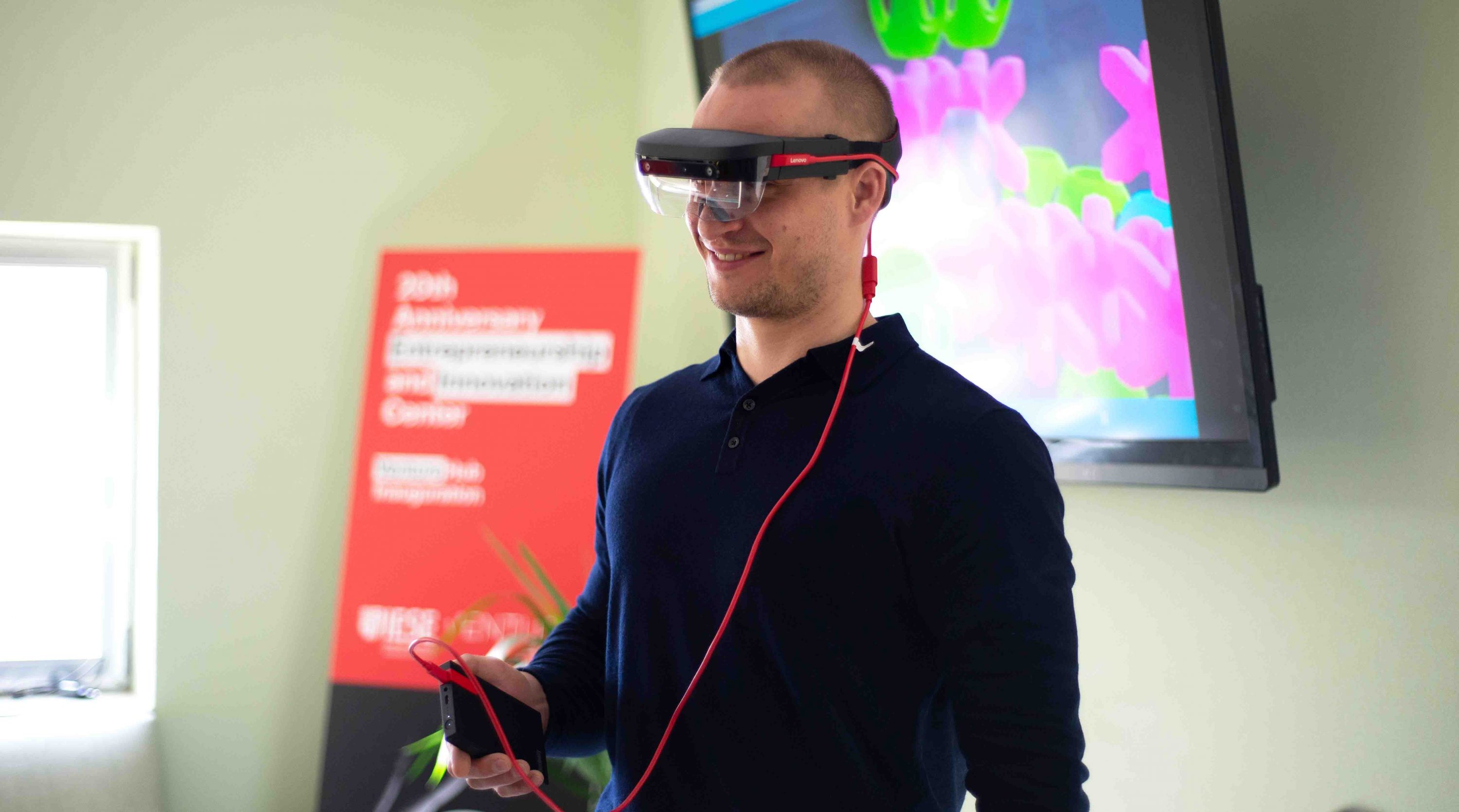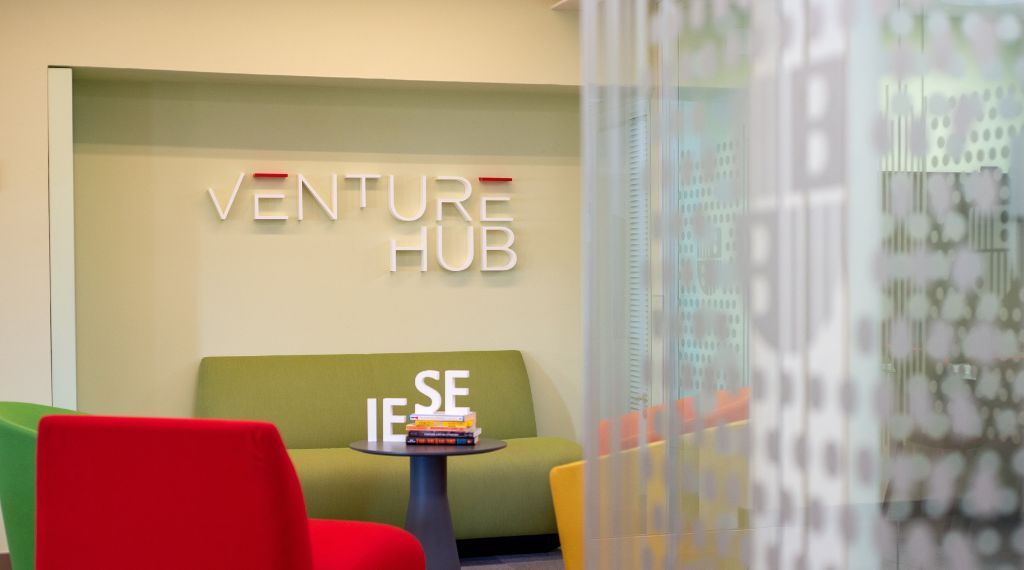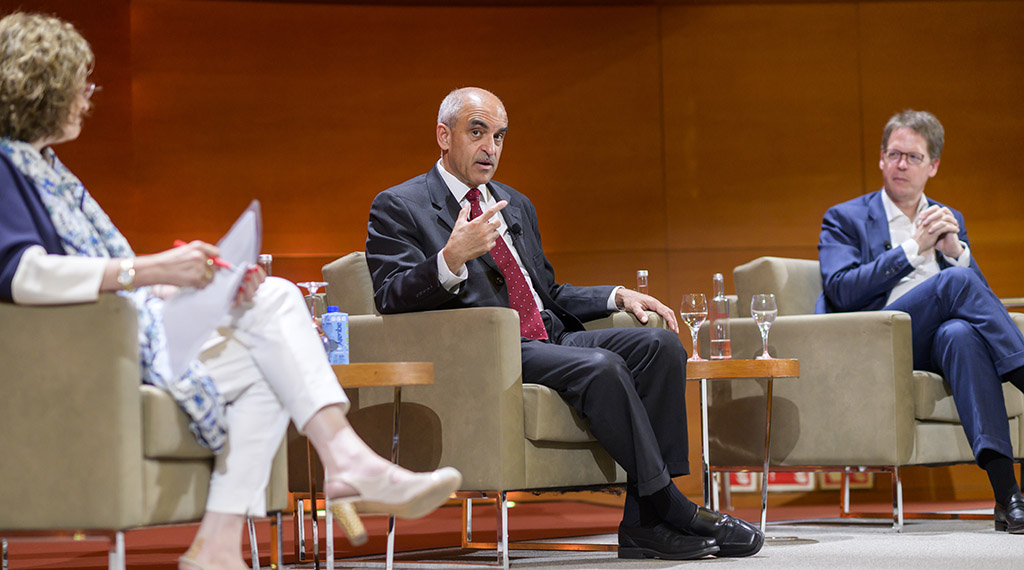Stories
IESE pioneers 5G in Europe
Powered by Cellnex Telecom, 5G connectivity may revolutionize participants’ learning experiences
IESE’s Ulrich Kruse tests an augmented reality headset using 5G on the Barcelona campus.
Photo: Edu Ferrer
March 9, 2020

IESE and telecom infrastructure operator Cellnex have announced the setup of a 5G mobile network at the school’s Barcelona campus. Together, they are using it to explore how the technology can help enhance educational experiences. With this, IESE becomes one of the first business schools in Europe to pilot cutting-edge 5G prototypes on its campuses.
5G connectivity, which will ensure a wireless experience up to 100 times faster than 4G and with drastically reduced network latency (or the time it takes devices to communicate with wireless networks and get response), has the potential to greatly improve the learning experience of business school participants.
It also comes at a time when, whether due to current events or climate concerns, we are seeing an acceleration in trends like remote work, blended learning and virtual networking – meaning the improved experiences 5G-enhanced technologies can bring will be even more valuable to executives around the world.
To this end, IESE´s provisional 5G mobile infrastructure has been built with the collaboration of MasMóvil, to test a variety of prototypes that could be deployed in future programs. For example, one prototype that has already completed its first demo at IESE makes use of edge computing combined with a 5G small cell, and a pair of wireless glasses with augmented reality, through which participants can play a computer-generated game in their real-life environment. From here, it is not too much of a stretch to imagine future participants discussing a business case in an industrial factory, an airport, or at a car assembly line, while seeing in real-time data about the processes, logistics and costs of some of the elements around them.
Adopting 5G on campus: Enhancing future learning experiences
There are countless other uses for 5G and edge computing in the education sector, such as experiencing a business case from home with virtual reality, broadcasting a 360 captured session in 4k definition to thousands of 5G mobile phones, building new blended learning experiences with non-existing objects, or creating real-time simulations for teams, to name a few.
“Anticipating trends and experiencing new approaches, as typified by this collaboration with Cellnex, are an essential part of providing the best possible learning experience for our participants,” according to Dean Franz Heukamp. “At IESE, we are always looking to provide cutting-edge insights and new methodologies on our programs to help participants grow both personally and professionally. This is just one of many advancements that we are preparing in this regard.”
5G expanding worldwide
5G will swiftly become a reality across homes and businesses worldwide. By 2025, the number of worldwide 5G subscribers is expected to hit 2.6 billion, while average mobile data consumption is also projected to climb from 7.2GB to 24GB per smartphone. In real terms, that accounts for being able to stream a 30-minute HD video a day during your commute, including a six-minute clip of virtual reality.
With 5G mobile phones soon to hit the market, the types of organizations looking to utilize the untapped potential of such connectivity will also only increase. Òscar Pallarols, Global Commercial and Innovation Director at Cellnex, said, “We are going to see a dramatic growth in 5G adoption across sectors in the forthcoming years. This collaboration is a clear example of the many that will follow in the education sector.”
Cellnex Telecom is Europe’s leading operator of wireless telecommunications and broadcasting infrastructures with a portfolio of c.58,000 sites including forecast roll-outs up to 2027. Cellnex operates in Spain, Italy, Netherlands, France, Switzerland, the United Kingdom, Ireland and Portugal.


